How to reach here:
By Air:Nearest domestic as well as international airport is at Ahmedabad (389 km) and is well connected to many cities across the country.
By Rail: Porbandar is well connected with Ahmedabad, Jamnagar, Rajkot, Surat, Agra, Allahabad, Gaya, Delhi, Mumbai, Jaipur, Kolkata, Lucknow etc by direct trains.
Best time to visit: Throughout the year
Languages spoken: Gujarati, Hindi.
Must eat: Kopra paak, Chorafali, Patra, Tindora nu Shaak, Juvar no Rotlo.
Famous Restaurants: Swati Restaurant,Swagat Restaurant.
Places you must visit:
Kirti Mandir, also known as the ‘Temple of Fame’ is an important structure as well as popular religious sightseeing attraction of Porbandar. It was built by Maharaja Sayaji Rao III in 1936 AD. This temple is adjacent to the birthplace of Mahatma Gandhi and comprises his memorial along with a library having books on Gandhism, a prayer hall, a children’s nursery, and a spinning hall.The complete structure of this temple is E-shaped and comprises domes, terraces, balconies, and a sikhara. This sikhara is 33 m high and is constructed in Hindu style of architecture. The temple interiors are marble finished and said to be the cenotaph of the Gaekwads.
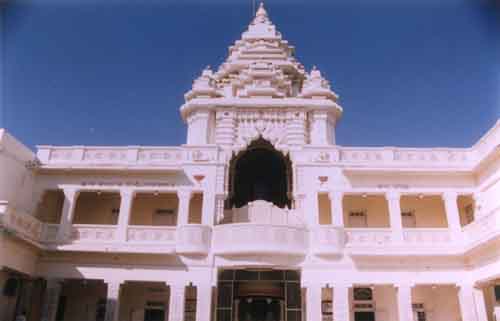


The Krishna-Sudama Temple of Porbandar is dedicated to the childhood friend and devotee of Lord Krishna, Sudama. The temple of Sudama, located in the centre of Porbandar City, is the only temple in India dedicated to Sudama. The temple was built in the period of 1902 to 1907.The temple consists of a monument in its premises, in the memory of Shri Ram Devji Jethwa, the ruler of Jethwa Dynasty. The temple has a maze in its premises; it is a common belief here that crossing the maze helps in removing all the sins.


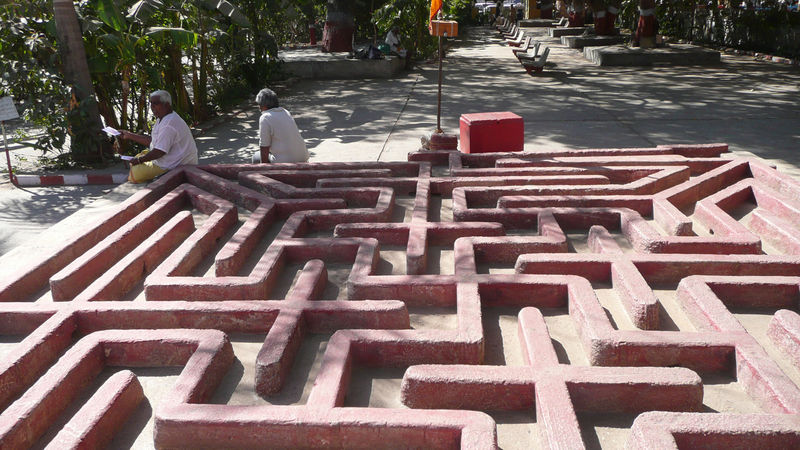
Rana Sartanji built Darbargadh, the fortified palace, with a huge carved stone entrance gate flanked by high turrets and massive wooden doors. It is a typical example of such royal enclosures situated within the town of Gujarat. The nearby edifices on the left of the entrance are also good examples of large mansions with courtyards and intricately carved wooden elements.The massive fort wall has several bastions, 4 main gates and 3 'baris' (small gates). The four main gates are Kathiawadi Darwaja in east, Porbandar Gate in west, and Halar Gate in north and Junagadh Gate in south. The smaller gates are- Darbari Bari, Bhimji Bari and Sati Bari. Darbargadh of Dhoraji is located at the highest point in the town and is approached by Darbari Bari; a beautiful gate adorned with a jharokha, resting on brackets of 4 elephants statues in different poses. A finely carved entrance gate leads to the Darbargadh in the middle of a courtyard. Darbargadh is a three storeyed structure on a high plinth. The facade is ornamented with sculptures of musicians, complex geometric patterns, images of sitting lions in different postures on long eaves, profusely carved pillars, horizontal friezes, decorative 'kanguras' and windows framing skyline. It is designed like a jewel box- in the same architectural style of Navlakha Palace at Gondal.

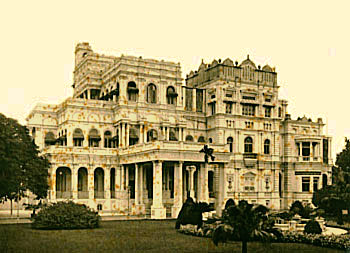

Barda hills wildlife sanctuary is spread over an area of 192.31 square km. The sanctuary is of hilly terrain and is at an altitude of 79.2 m to 617.8 m. The place has two dams, one built on the River Bileshvary called Khambala and the other on the River Joghri called Fodara. The forest of Barda Hills was a private resort of the Ranavav (Porbandar) and Jamnagar, which were once princely states. This is the reason why they are still called Barda and Jam Barda. The forest became a wild life sanctuary in the year 1979. Barda wildlife Sanctuary is home to mammals, reptiles and birds. Some species that inhabit here include Lion, Chinkara, Sambar and Spotted Deer, Crocodile, Chameleon, Spotted Eagle and Crested Hawk-Eagle.


Barda Hills is famous for its woods, which is spread over an area of 190 square km. The River Bileshvary and the river Joghri flows through the Barda Hills Wildlife sanctuary.There are two dams situated at this place namely Khamdala and Fodara, which are picnic spots. Barda hills is also ideal for trekking.. This hilly terrain is with patches of flat plains at places.
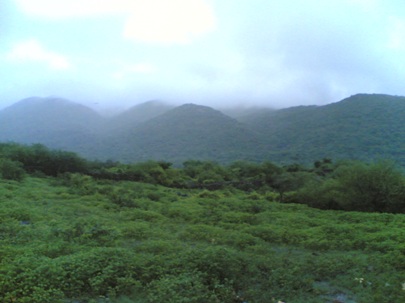
The Sartanji Choro is a three storey summer pavilion that has been built in the Rajput style of architecture by Rana Sartanji. It lies in the middle of a garden and each side represents different seasons. It also comprises images of musicians, carved foliated arches, and a single dome at its top. This place is associated to the time when Rana Sartanji used to compose poems in Braj Bhasha, sitting under a pavilion.

The Huzoor Palace of Porbandar was built in the European style of architecture by Natwar Shah. It faces the Arabian Sea and its surroundings comprise gardens and water fountains. This structure basically has a zigzag formation, which is topped by trussed timber roofs and balustrade terraces. It also has several neo-classical pillars with semi-circular porticoes.
The Sri Hari Mandir, also referred to as the Sandipani Vidyaniketan was established in the year 1992 with 85 acres of land. This monument has a length of 105 feet and its entire complex comprises a total of 66 pillars. The deities of this temple are believed to be the incarnation of Pujya Bhaishri’s faith. The temple houses deities of Shri Lakshmi Narayan, Shri Radha Krishna, Karunamayi Maa Goddess, Shri Janki Vallabh, Lord Hanuman, Lord Ganesha, and Shri Veda.As per Pujya Bhaishri’s view, the temple was built to provide practical training for executing Hindu rituals to Rishikul students. At present, the temple is one amongst the premier educational institutes providing Vedic Education. The temple was completed in the year 2006 and an event called ‘Sandipani Mandir Mahotsav’, was conducted to mark the inauguration of Mandir.


The temple of Khimeshwar standing on Dwarka road, sea side is believed that Pandavas lived here. The temple is famous for its fair that is organised in the month of June or July every year.
The Porbandar Bird Sanctuary is the smallest bird sanctuary spread over in an area of 1 square km. The sanctuary has a lake attracting migratory birds and other birds such as teals, fowls, flamingos, ibis and curlews. The place gives opportunity to see birds like Avocets, Pelicans, Flamingos, and Spoonbills. The Porbandar Bird Sanctuary is home to other birds like Shovellers, Jacanas, Red Shanks, Ruffs, Coots, Little Cormorants, Little Grebes, Pintails, Whistling Teals, Herons, and Terns.
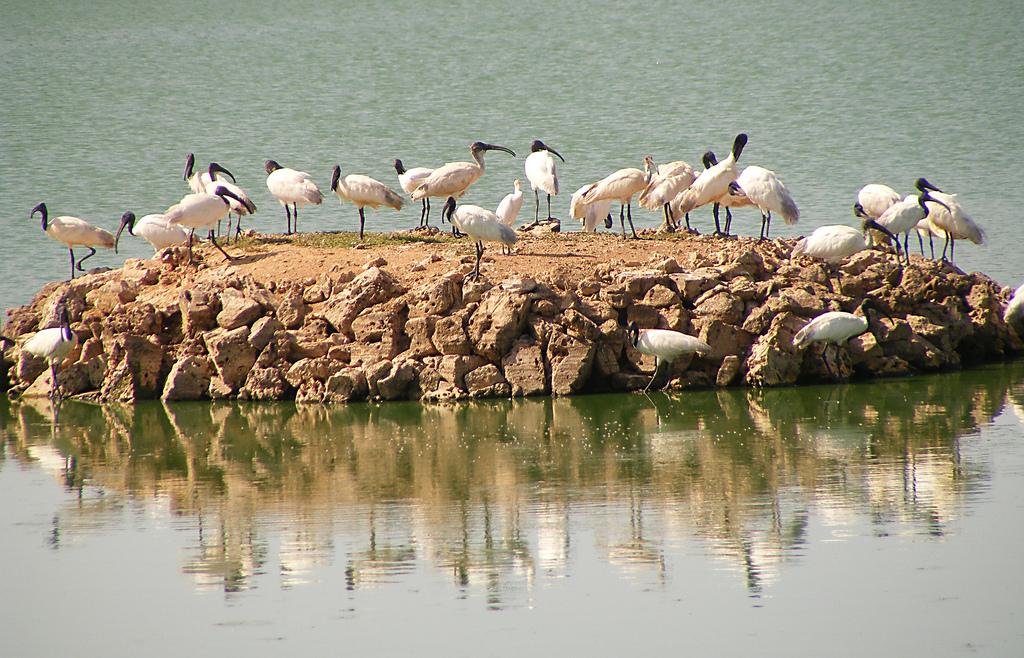
Daria Rajmahal was built by Maharaja Bhavsinhji with the assistance of designs from state engineer Phulchand Parekh, in late 19th century. Daria Rajmahal represents the architecture of Arab and Italy. The Rajmahal has Italian styled facades with amalgamation of Renaissance and Gothic detail. The palace houses chandeliers, European furniture and paintings that reflect the royalty of Maharaja.
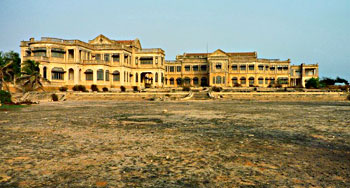
The Tara Mandir planetarium is built by the donation of Shri Nanjibhai. It is also one among the first two planetariums in India that were started by Shri Jawaharlal Nehru. Tara Mandir has an overhead round screen with celestial bodies made on it. Here, the stars and planets are projected with special effects and explained in detail.
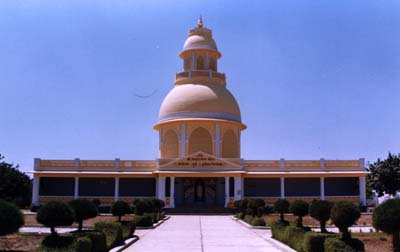
The Bharat Mandir, also known as temple of India, is one of its kind in India as it is dedicated to the country ‘Bharat’. The hall of this temple has a huge relief map of India on the floor. The temple houses stone carvings and brass reliefs of heroes from Hindu mythology on the pillars. The place is filled with pictures and sculptures representing Indian culture and religion.
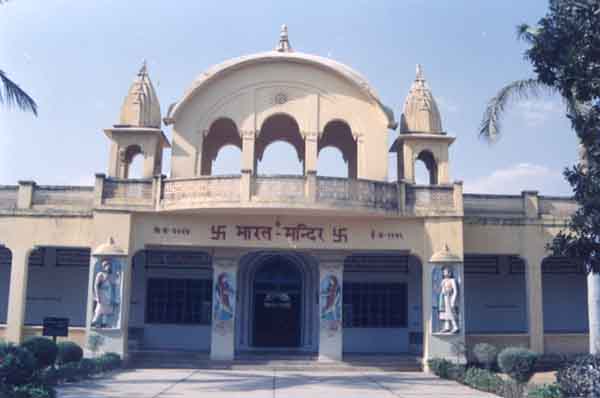
The Chowpaty Beach is located at a distance of ½ km from the centre of the town. Chowpaty Beach is a seaport of Arabian Sea situated near by ST bus station. The place is also a strolling area of flamingos and other shore birds.
No comments:
Post a Comment